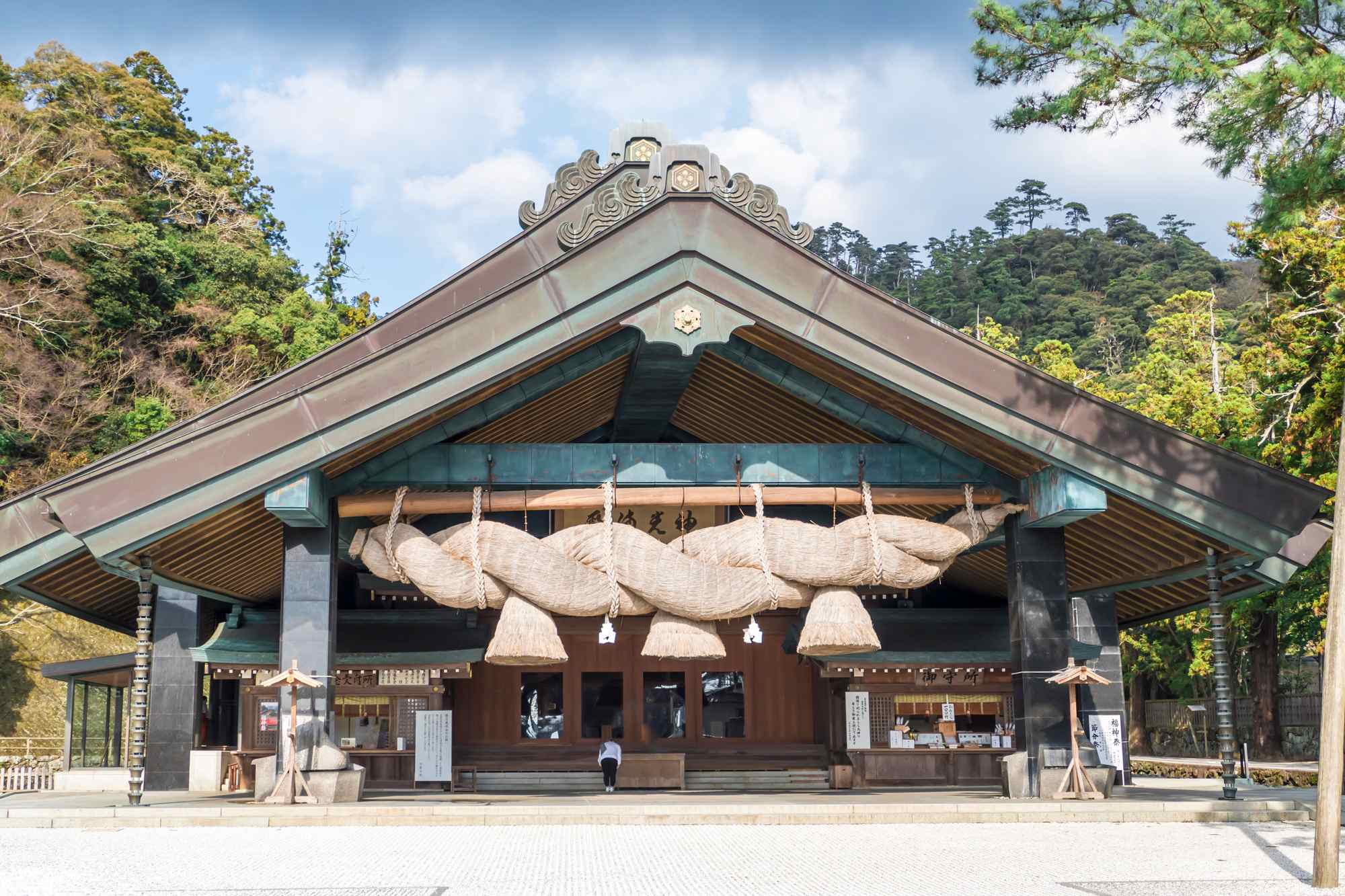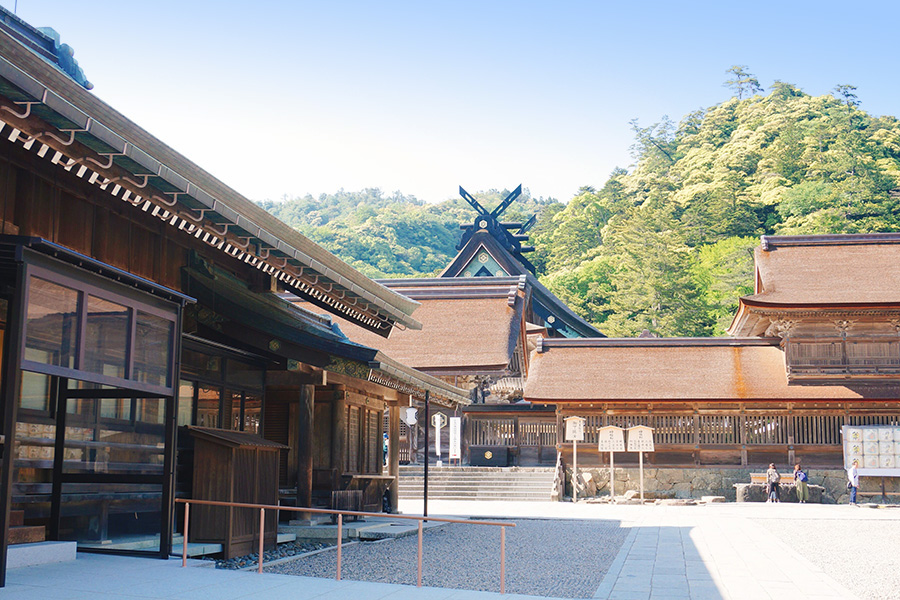


Izumo-taisha Grand Shrine
Where all the gods of Japan gather to forge the bonds of destiny and love.
One of Japan's most ancient and important shrines, Izumo-taisha in Shimane Prefecture is dedicated to the kami of relationships, matchmaking, and nation-building.
History of the Shrine
Izumo-taisha's origins are lost in the mists of Japanese mythology, so ancient that it is mentioned in the country's oldest texts, the 'Kojiki' and 'Nihon Shoki'. Legend states that the shrine was built as a gift to the kami Okuninushi after he agreed to peacefully cede control of the earthly realm of Japan to the heavenly kami, led by Amaterasu. In return for his magnanimity, a grand palace 'as high as the heavens' was constructed for him to rule over the world of the unseen—the realm of spirits and human connections.
Archaeological evidence supports the existence of a massive structure in ancient times, with giant wooden pillars being unearthed. In its prime, the shrine was said to stand at 48 meters tall, dwarfing all other buildings in Japan. While the current main hall ('honden'), built in 1744, is a still-impressive 24 meters, it maintains the unique 'Taisha-zukuri' architectural style, the oldest in Japan, evoking a powerful sense of primeval grandeur.
The Enshrined Kami
Okuninushi, the 'Great Land Master', is a complex and beloved deity from Japanese mythology. His legends portray him as a kind-hearted kami who overcomes numerous trials and betrayals at the hands of his eighty jealous brothers. He is a great hero, a nation-builder, and a kami of agriculture, business, and medicine. However, he is most famously worshipped as the powerful deity of 'enmusubi' (matchmaking and relationships).
His stories, such as his healing of the flayed Hare of Inaba, highlight his compassion and his role as a mediator. Having ruled the land with benevolence before relinquishing it, he remains a powerful force in the unseen world, weaving the threads of fate that connect all beings and helping people forge meaningful and lasting bonds.
What to See
The shrine is approached via a long, pine-lined path. A striking feature is the giant 'shimenawa' (sacred rope) that adorns the 'Kagura-den' (Hall of Sacred Dance). At 13.6 meters long and weighing 5.2 tons, it is the largest in Japan and a symbol of the shrine's immense power. Worshippers at Izumo-taisha have a unique prayer custom: two bows, four claps, and one final bow, in contrast to the usual two claps at other shrines.
The Honden, a National Treasure, is not accessible to the public, but its imposing scale and distinctive design can be admired from the outside. The grounds also feature numerous smaller shrines and statues depicting scenes from Okuninushi's mythological adventures, including his encounters with the Hare of Inaba.
Major Festivals
The most significant event at Izumo is the 'Kamiari-sai' (Festival of the Gods' Presence). In the 10th month of the old lunar calendar (usually November), all eight million 'yaoyorozu' kami of Japan are believed to leave their home shrines and gather at Izumo-taisha for a grand conference. They meet to decide the fates of mortals for the coming year, particularly concerning 'enmusubi'—the threads of destiny that bind people together in relationships, marriage, and friendship. While this month is known as 'Kannazuki' (the month without gods) elsewhere in Japan, in Izumo it is joyfully celebrated as 'Kamiarizuki' (the month with gods).
Support Izumo-taisha Grand Shrine
Your participation helps preserve this sacred site for future generations. Every digital offering contributes to real shrine preservation efforts across Japan.
By making an offering, you become part of a global community honoring Japanese spiritual traditions and supporting the cultural heritage that has been cherished for centuries.